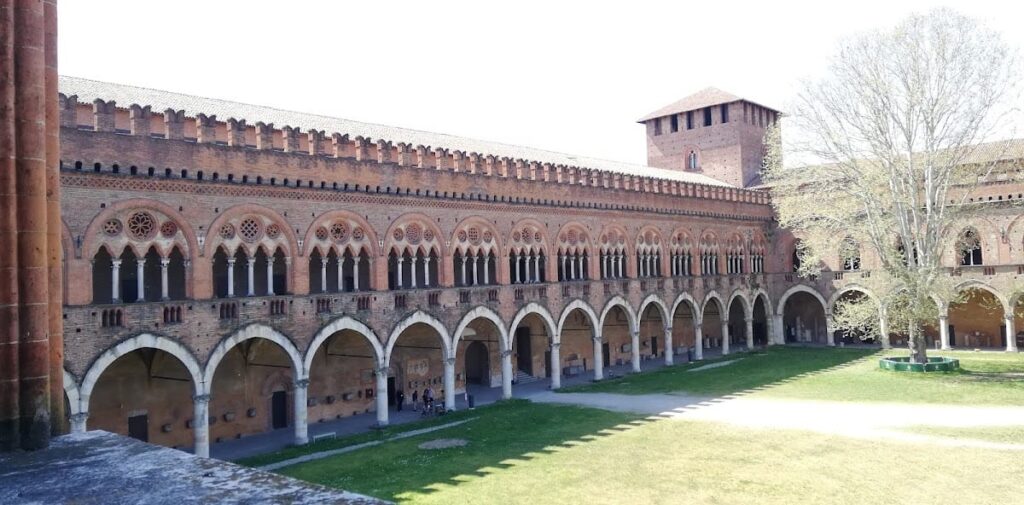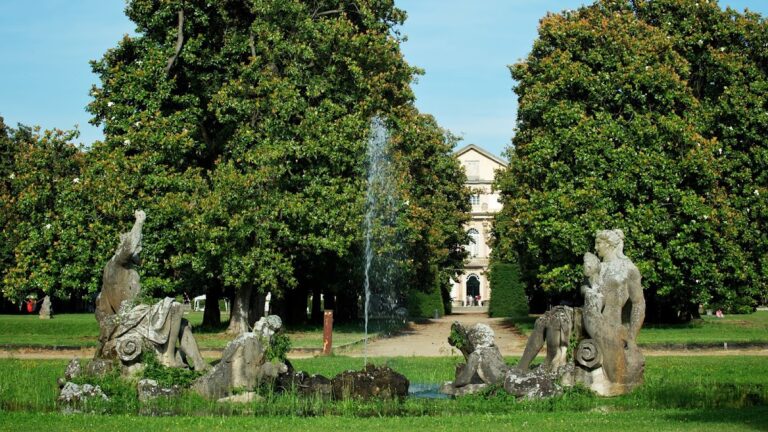Castello Visconteo di San Vito: A Historic Fortress and Noble Residence in Northern Italy
Visitor Information
Google Rating: 4.3
Popularity: Medium
Google Maps: View on Google Maps
Official Website: museicivici.comune.pv.it
Country: Italy
Civilization: Medieval European
Remains: Military
History
The Castello Visconteo di San Vito, also known as the Visconti Castle of Somma Lombardo, is located near the Ticino River in northern Italy. Its origins trace back to the 9th century, when initial buildings were established on the site. The fortress itself was constructed in the 13th century as part of a defensive line protecting the area between Milan and Lake Maggiore.
In 1448, following the collapse of the main Visconti ducal line and the rise of the Ambrosian Republic, brothers Francesco and Guido Visconti sought refuge in the castle. They divided the fortress and its lands between them, marking the beginning of two distinct family branches. Francesco’s descendants became the Visconti di San Vito line, while Guido’s heirs formed the Visconti di Modrone and Castelbarco Visconti families. The castle underwent renovations shortly after, in 1449, under their direction.
The Visconti di San Vito family gained further prominence in 1619 when King Philip III of Spain granted them the hereditary title of Marquis of San Vito. The castle served as a noble residence for centuries, hosting notable figures such as Pope Gregory XIV, born Niccolò Sfondrati in the castle in 1535. Italian kings Vittorio Emanuele II and Umberto I also stayed there during military exercises and hunting expeditions.
Ownership of the castle remained with the Visconti di San Vito family until the late 20th century. The last family member, Gabrio Luigi Visconti di San Vito, founded a preservation organization in 1997 to protect the castle and open it to the public. Archaeological excavations around the site have uncovered Roman-era artifacts, including inscriptions, boundary stones, and altars, linking the area to ancient settlement and religious practices.
Remains
The castle complex is a composite structure formed by the union of buildings from different periods. The northwestern wing, known as “degli Armigeri,” dates to the 14th and 15th centuries. The eastern wing was added in the 15th century, while the southern wing was constructed in the 16th century. Originally, the entire complex was surrounded by a single moat, and over time, multiple adjacent residences were incorporated into the castle.
Inside, the Salone d’Onore (Hall of Honor) features early 17th-century frescoes attributed to artists linked to the Procaccini family. These decorations draw inspiration from Flemish engravings by Crispijn van de Passe, Theodor and Philippe Galle, and Adriaen Collaert. The castle chapel, dedicated to the Madonna Assunta, contains liturgical furnishings and an Annunciation painting believed to come from the workshop of the artist Cerano.
A gallery within the castle displays religious paintings, including portraits of Niccolò Sfondrati, who became Pope Gregory XIV. The castle also houses a unique collection of about 400 barber’s basins, known as bacili, from various European regions such as Faenza, Savona, France, Germany, England, and Spain. This collection dates to the 18th century and was assembled by Marquis Carlo Ermes Visconti in the late 19th century.
The Camera Reale (Royal Chamber) contains a large wooden bed from the 17th century, reserved for visits by Italian kings during their stays. Another room honors Count Gabrio Casati, a figure of the Italian Risorgimento related to the Visconti di San Vito family, featuring a portrait painted by Eliseo Sala.
Archaeological finds in the surrounding territory include Roman inscriptions, boundary stones, and altars, which remain preserved within the castle’s collections. These artifacts confirm the long history of human presence and religious activity in the area. The castle’s overall preservation allows for parts of the structure to be maintained in good condition.










